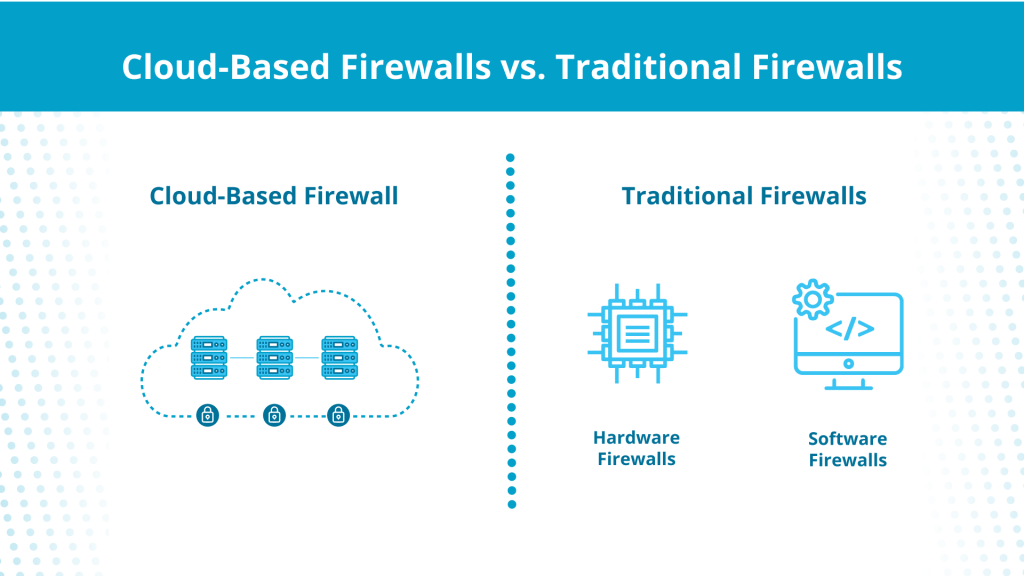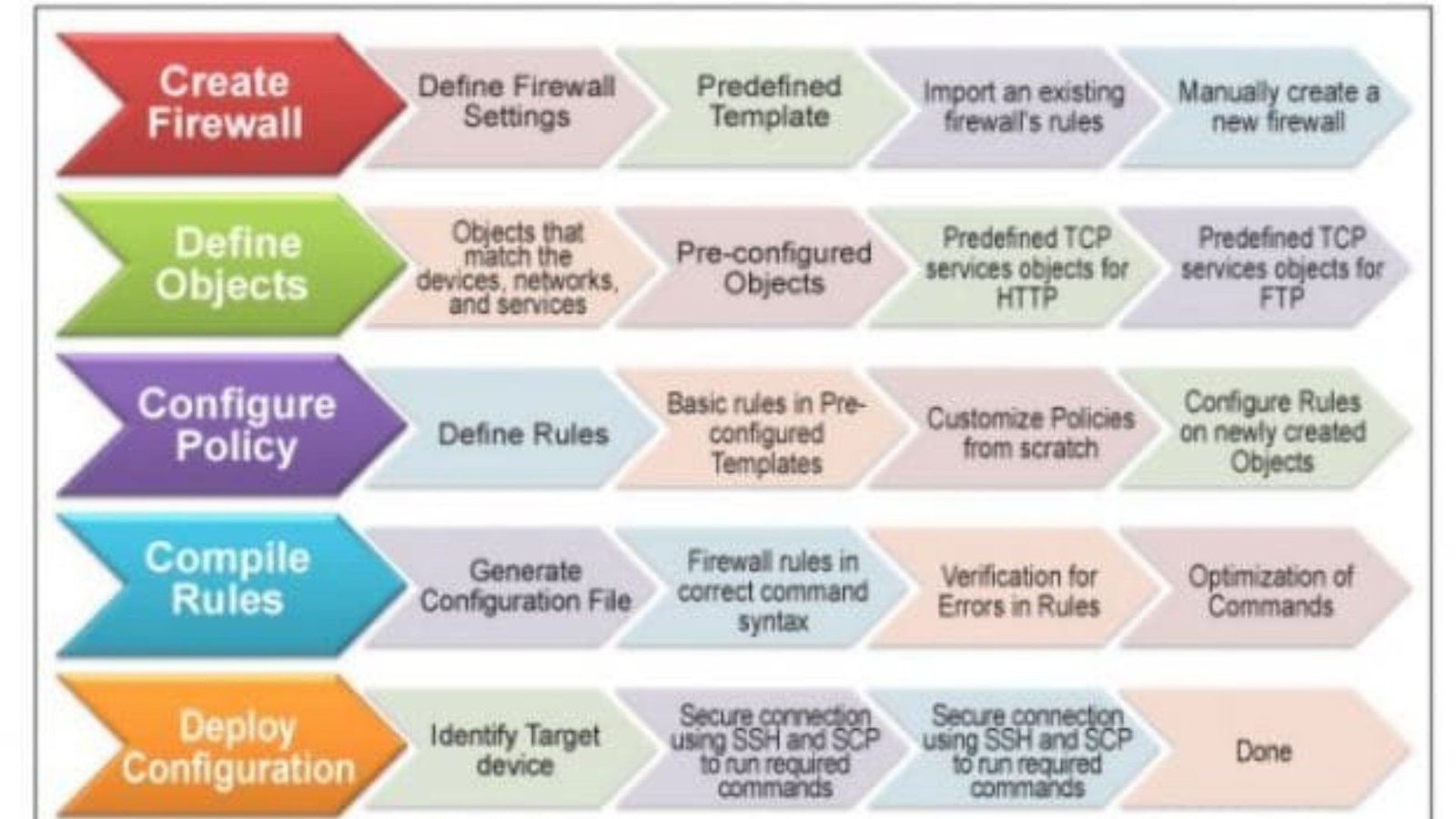Firewalls have long been a cornerstone of network security, evolving significantly since their inception. Initially, firewalls were simple hardware devices, but over time, they have adapted to meet the demands of increasingly complex and distributed networks. Today, firewalls have transformed into sophisticated, cloud-based solutions that offer enhanced protection in a digital world. This article traces the evolution of firewalls from their hardware origins to modern cloud-based solutions.
1. The Beginnings: Packet Filtering Firewalls
The first generation of firewalls emerged in the late 1980s, focusing on packet filtering. These firewalls operated at the network layer, analyzing data packets and allowing or denying them based on predefined rules. Packet filtering firewalls were simple and effective for basic network security but lacked the ability to inspect the content of the packets, making them vulnerable to more advanced threats.
2. Stateful Inspection: A Major Leap Forward
In the early 1990s, the development of stateful inspection firewalls marked a significant advancement in network security. Unlike their predecessors, stateful inspection firewalls could track the state of active connections, providing context for each packet passing through the network. This allowed them to make more informed decisions about which packets to allow or block, offering better protection against complex threats.
3. The Rise of Application Layer Firewalls
As cyber threats became more sophisticated, the need for deeper inspection led to the rise of application layer firewalls. These firewalls operated at the application layer of the OSI model, enabling them to inspect and filter traffic based on the specific applications or services being used. Application layer firewalls could identify and block malicious activities that bypassed lower-layer firewalls, providing a higher level of security.
4. Next-Generation Firewalls: Comprehensive Protection
The early 2000s saw the emergence of next-generation firewalls (NGFWs), which integrated multiple security functions into a single device. NGFWs combined traditional firewall capabilities with advanced features such as intrusion prevention systems (IPS), deep packet inspection, and application awareness. This holistic approach provided comprehensive protection against a wide range of threats, from malware to zero-day attacks.
5. The Shift to Software and Virtual Firewalls
As virtualization and cloud computing became more prevalent, the need for flexible and scalable firewall solutions grew. Software and virtual firewalls emerged as a response, allowing organizations to deploy firewalls in virtual environments and protect cloud-based resources. These firewalls offered the same level of security as their hardware counterparts but with the added benefits of scalability and ease of management.
6. The Advent of Cloud-Based Firewalls
The evolution of firewalls has culminated in the development of cloud-based firewalls, also known as Firewall-as-a-Service (FWaaS). These firewalls are hosted in the cloud and delivered as a service, providing scalable, flexible, and centralized security for organizations of all sizes. Cloud-based firewalls can protect distributed networks, remote users, and cloud resources, making them ideal for the modern, hybrid workforce.
7. Benefits of Cloud-Based Firewalls
Cloud-based firewalls offer several advantages over traditional hardware and software solutions:
- Scalability: Cloud-based firewalls can easily scale to accommodate growing networks and fluctuating traffic demands.
- Centralized Management: With a cloud-based solution, security policies can be managed from a single console, simplifying administration and ensuring consistency across the network.
- Cost-Effectiveness: By eliminating the need for physical hardware, cloud-based firewalls reduce upfront costs and ongoing maintenance expenses.
- Automatic Updates: Cloud-based firewalls are updated automatically with the latest security patches and threat intelligence, ensuring that they are always equipped to handle emerging threats.
8. Challenges and Considerations
While cloud-based firewalls offer numerous benefits, they also present certain challenges. Organizations must carefully consider factors such as data privacy, compliance, and the reliability of their cloud service provider. Additionally, integrating cloud-based firewalls with existing on-premises security infrastructure can be complex and may require careful planning and coordination.
9. The Future of Firewalls: AI and Machine Learning
Looking ahead, the future of firewalls will likely involve the integration of artificial intelligence (AI) and machine learning. These technologies can enhance the capabilities of firewalls by enabling them to detect and respond to threats in real time, without relying solely on predefined rules. AI-powered firewalls could analyze vast amounts of data, identify patterns, and predict potential attacks before they occur, providing even greater security for organizations.

Conclusion
The evolution of firewalls from simple hardware devices to advanced cloud-based solutions reflects the changing landscape of cybersecurity. As networks become more complex and threats more sophisticated, firewalls have adapted to provide comprehensive protection in both physical and virtual environments. Today, cloud-based firewalls represent the cutting edge of network security, offering scalable, flexible, and cost-effective solutions for organizations worldwide. As we move into the future, the continued integration of AI and machine learning promises to take firewall technology to new heights, ensuring that businesses remain protected in an ever-evolving digital world.










